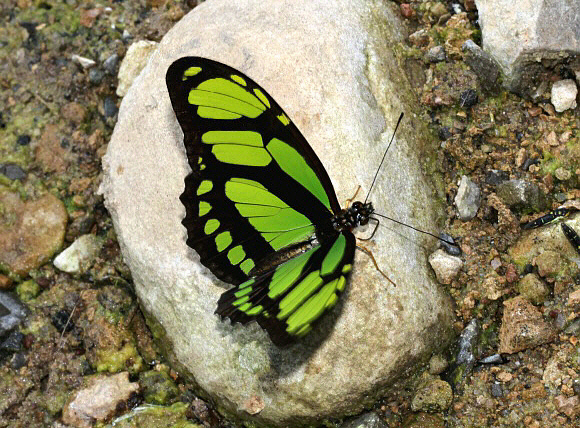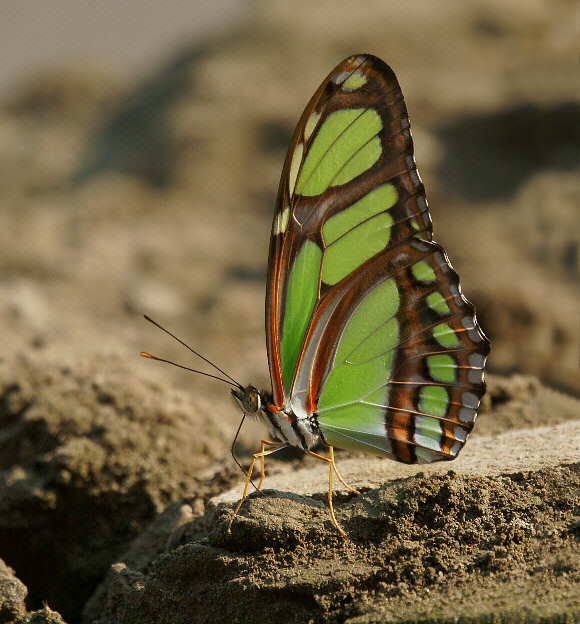 Philaethria dido, male, Rio Madre de Dios, Peru – Adrian Hoskins
Philaethria dido, male, Rio Madre de Dios, Peru – Adrian Hoskins
Introduction
There are 7 species in the genus Philaethria, which some workers consider to be the most primitive of the Heliconiine genera. Two species – constantinoi from Colombia and andrei from Guyana, were discovered in 1991 and 2002 respectively. A third species pygmalion is found in the Brazilian state of Para, near the mouth of the Amazon. South-east Brazil holds another species werneckei, while diatonica and ostara are found in Honduras and Colombia respectively.
Philaethria dido is among the most beautiful and graceful of neotropical butterflies. It is regarded as being fairly common throughout most of its range but is rarely seen as it spends most of its life high in the forest canopy.
Less experienced lepidopterists often confuse Philaethria dido with the Malachite Siproeta stelenes – a very common Nymphalid found in open secondary forest and around the edges of forest clearings. The wing shape of the two genera are completely different however.
Philaethria dido is found from Mexico to the southern Amazon.
 Philaethria dido, males, Rio Madre de Dios, Peru – Adrian Hoskins
Philaethria dido, males, Rio Madre de Dios, Peru – Adrian Hoskins
Habitats
This species breeds in wet tropical rainforests at altitudes from 0-1200m, but appears to be absent at higher altitudes and from deciduous forests.
Lifecycle
The eggs are laid singly on the underside of the leaves of low growing Passiflora plants. The larva is pale green with reddish spines along the back and sides. The pupa resembles a bird dropping. It is pale brown, mottled with grey and covered with tiny warts.
 Philaethria dido, Satipo, Peru – Adrian Hoskins
Philaethria dido, Satipo, Peru – Adrian Hoskins
Adult behaviour
As with most butterfly species, the behaviour of males and females differs greatly. The females are seen more frequently, flitting and gliding at a height of about 4 metres, and occasionally descending to examine low growing Passiflora plants at light gaps in the forest.
Males are more elusive but occasionally descend from the canopy to imbibe mineral-rich moisture from river beaches or from places where streams ford forest roads. At these times they are quite approachable, but flutter constantly as they move about probing the ground for nutrients. They are only active in hot sunny conditions and quickly return to the canopy if cloud obscures the sun. The flight is rapid but very agile.
Both sexes nectar at Cissus and other flowers in the canopy.

Philaethria dido, male, Rio Madre de Dios, Peru – Adrian Hoskins
